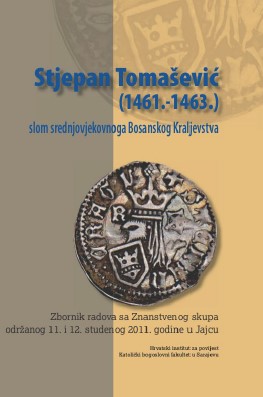Sudbina posmrtnih ostataka kralja Stjepana Tomaševića 1463. – 1888. – 1992. – 1999.
The Fate of Posthumous Remains of King Stjepan Tomašević, 1463 –1888 –1992–1999
Author(s): Jakša Raguž
Subject(s): Military history, Political history, 15th Century, 19th Century, Transformation Period (1990 - 2010), Inter-Ethnic Relations, Peace and Conflict Studies
Published by: Hrvatski institut za povijest
Keywords: King Stjepan Tomašević; posthumous remains; Jajce; “King’s Grave”; Ćiro Truhelka; Habsburgs; Franciscans; Croatian Defence Council; Army of Republika Srpska; Bosnian War of 1992-1995;
Summary/Abstract: In the course of his lifetime, King Stjepan Tomašević was frequently nothing but a object in political conflicts within and around medieval Bosnia. For this reason his (alleged) posthumous remains became an instrument in political clashes in modern Bosnia and Herzegovina. The exhumation in 1888 was conducted to prove symbolically the continuity of the rule of Roman Catholic monarchs in Bosnia and Herzegovina: the Habsburgs followed the Kotromanićs. In the latest war of 1991-1995, royal remains became an important symbol used and appropriated by the warring sides. Towards the end of the war the skeleton became a motive in serious political and diplomatic conflicts between Croats and Bosniaks that continued into the peacetime. Today the king’s remains continue to provoke occasional fervent polemics between Croats and Bosniaks concerning the ethnic affiliation of the late king, and the related origins of the statehood of Bosnia and Herzegovina.
Book: Stjepan Tomašević (1461.-1463.) - slom srednjovjekovnoga Bosanskog Kraljevstva - Zbornik radova
- Page Range: 235-282
- Page Count: 48
- Publication Year: 2013
- Language: Croatian
- Content File-PDF

